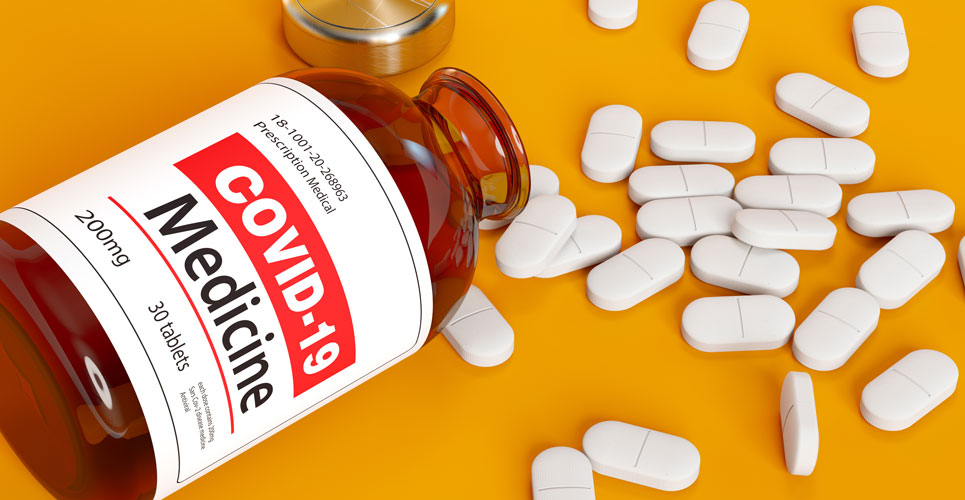Antiviral therapy with tenofovir and emtricitabine in mild COVID-19 led to a significant reduction in viral burden after 7 days.
Although virus-neutralising monoclonal antibodies have been used to reduce the viral load in patients with COVID-19, there is currently a lack of oral therapies to treat COVID-19. Nevertheless, an Phase II, dose ranging study with the anti-viral agent molnupiravir, found the drug to be effective in reducing the level of positive viral cultures in patients with COVID-19. Interestingly, in a study of patients with HIV treated with the combination anti-viral therapy, tenofovir and emtricitabine, it was found that such individuals had a lower risk of contracting COVID-19. Both tenofovir and emtricitabine are nucleotide analogues that have been considered as essential medicines by the World Health Organization and have been used to treat HIV and other viruses for many years. Moreover, there has been some data from animal studies indicating that the combination of tenofovir and emtricitabine reduces clinical scores in COVID-19. Based on these preliminary observations, a team from the Department of Clinical Research and Innovation, Caen, France, decided to conduct a pilot, randomised, open-label controlled, phase 2 trial of this dual therapy in non-hospitalised patients with mild-to-moderate COVID-19 infection. They recruited outpatients at two French hospitals who had a positive nasopharyngeal swab PCR test for COVID-19 less than 5 days ago. Eligible patients were then randomised 1:1 to receive either tenofovir (245mg) plus emtricitabine (200mg) as a single tablet or standard care. The dosage reflected the regime used in HIV prophylaxis, namely 2 tablets on day one, followed by a single dose for the next seven days. All participants completed a standard questionnaire designed to assess self-reported COVID-19 symptoms from days 2 – 3 and from day 5 to 6. The primary outcome was the change in COVID-19 viral load from baseline at day 4, based on the cycle threshold (CT) value for the PCR test on that day.
Findings
In total, 60 patients were enrolled and 30, with a mean age of 39.9 years (53% female) assigned to dual antiviral therapy and the remainder to usual care. Among those in the anti-viral therapy group, the most common co-morbidity was hypertension (7%). In the group assigned to anti-viral therapy, at day 4, the CT value compared with standard care increased by 2.3 (95% CI – 0.6 – 5.2, p = 0.13) but 2.9 (95% CI 0.1 – 5.2, p = 0.044) at day 7. However, the time to symptom recovery was similar between groups and by day 7, six of those in the anti-viral group compared to three in the standard care arm had no symptoms.
In discussing these results, the authors felt that while the primary outcome was not met in those taking tenofovir and emtricitabine after 4 days, this difference was significant after 7 days. However, in their conclusion, they did not advocate the use of the combination in clinical practice.
Citation
Parienti JJ et al. Effect of Tenofovir Disoproxil Fumarate and Emtricitabine on nasopharyngeal SARS-CoV-2 viral load burden amongst outpatients with COVID-19: A pilot, randomised, open-label phase 2 trial. EClinicalMedicine 2021

